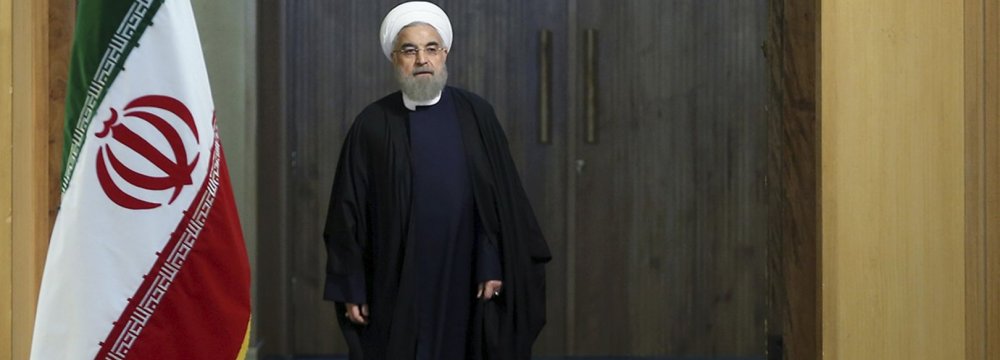How has the Rouhani administration fared in the past three years? With presidential elections looming next year, commentators are evaluating the Rouhani administration. While critics undermine the effort of his government more than three years into office citing intangible improvement in the average living standard, others boast about the history that was made in the negotiations with the West over Tehran’s nuclear program, and talk of prudent crisis management.
Hadi Salehi Esfahani, a professor at University of Illinois at Urbana-Champaign, had his take on the matter published in the Financial Tribune’s sister publication, the Persian-language Donya-e-Eghtesad. In his view, the administration has created much needed stability in the economy but has also been overwhelmed at some stages by the magnitude of the issues it has had to overcome.
Rouhani inherited a country in turmoil from his conservative forerunners. Iran was under severe sanctions. Its currency had lost 70% of its value. The bubble in the construction sector had burst. He was also left with an unknown amount of overdue debt—estimated at the time at around a third of
GDP, though the exact size of the government’s liabilities is still unknown.
As Esfahani recalls, Rouhani focused on normalizing relations with the outside world. The negotiations took three years to bear fruit. The government has faced backlash from critics as initial expectations about the effects of sanctions relief fell short. Nevertheless, the deal is showing its positive effects; from declining commercial costs to a 57% growth in the oil and gas sector in the first fiscal quarter after sanctions were eased.
Furthermore the Rouhani administration successfully curbed inflation. It decreased it from 45% to below 10% during the period. Aided by low inflation in the global economy, the government decreased the budget deficit; kept rial’s value nearly pegged to the dollar and better managed money supply in the economy. All of this helped curb inflation but brought to light the crisis in banking.
Banks rushed to property markets during the early 2010s. High inflation meant investment in property and other assets was the only way to turn a profit. Money could only be lent at high rates, which increased default risk, as banks were experiencing first hand. The drop in inflation and the ensuing recession in property markets left banks with illiquid assets.
As a result banks took to borrowing from the central bank and started competing over deposits, driving up interest rates. Illegal financial institutions owned by quasi-state agencies abetted the problem by offering much higher deposit rates.
In response, the Central Bank of Iran has steadily curbed their influence and gotten banks to drop interest rates simultaneously. It also decreased reserve requirements, giving lenders some direly needed liquidity. These have, on paper, brought banks back from bankruptcy, but as lending rates remained prohibitive and the business environment was not conducive, most of the newly freed cash was used for paying interest on deposits or refinancing delinquent loans.
Also, the drop in crude oil prices during Rouhani’s time in office severely hampered the administration’s ability for easy monetary policy and added fiscal spending, which could have increased growth.
As Salehi Esfahani sums it, “The Rouhani government’s policies had an important role in reducing inflation, but this achievement came at great cost.”





